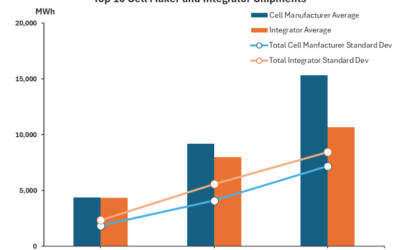SolarCity is rolling out commercial solar for SMEs, which can be combined with storage, the company confirmed. Images: SolarCity.
A push by US leasing giant SolarCity to serve small and medium enterprises (SMEs) with its commercial solar offering will be bolstered by a tie-in with the company’s energy storage solutions, a spokesman has confirmed.
Jonathan Bass, SolarCity’s VP of communications, told PV Tech Storage yesterday that the new service, announced yesterday, by which SMEs can get rooftop PV installed and potentially save 5% to 25% over existing utility bills, is “absolutely” intended to work in conjunction with DemandLogic.
The commercial storage systems offer a distinctly different value proposition to SolarCity’s residential offerings, which so far focus on backup power as their main feature and have only been deployed at pilot level. As Bass pointed out in an earlier interview in April with PV Tech Storage, commercial enterprises in many parts of the US are hit with demand charges on their bills. At that time, SolarCity was launching a 300MW commercial solar fund, with its solar-plus-storage clients including retail giant Walmart.
Storage can help ‘flatten’ peaks in electricity use, further reducing customers’ bills, Bass reiterated yesterday.
Try Premium for just $1
- Full premium access for the first month at only $1
- Converts to an annual rate after 30 days unless cancelled
- Cancel anytime during the trial period
Premium Benefits
- Expert industry analysis and interviews
- Digital access to PV Tech Power journal
- Exclusive event discounts
Or get the full Premium subscription right away
Or continue reading this article for free
“The storage in combination with solar is particularly helpful in addressing demand charges,” Bass said.
“Commercial customers often pay what are called demand charges, they pay their agreed upon rate per kWh of electricity they use, but then based on their peak demand from the grid, at any given point in the billing cycle, they get hit with a demand charge. Storage allows you to store electricity in the middle of the day and discharge it later in the afternoon so from the grid’s perspective the demand or the draw is flat.”
Bass called the saving a “unique benefit of storage in the commercial market”. He said DemandLogic is automated to manage onsite demand charge reduction, and explained how the savings are added on to what would already be saved by installing the solar.
“The commercial customer is going to have a leftover utility bill. Typically commercial customers do not offset 100% of their usage with solar, or solar and storage in combination. The solar reduces that bill and the storage component reduces that bill even further by allowing them to avoid that demand charge,” Bass said.
While it has executed projects in the commercial space for many big players including Walmart, the company has played up the significance of the SME launch, which offers 20-year fixed payment terms for its customers. Highlighting that so far, this sector has been underserved by the US commercial solar market, SolarCity said SME projects have been difficult to finance in the US in part because smaller companies do not have formal investment grades that larger companies have. Bass also said yesterday that the commercial offering has another advantage in that the PV is tied to the building and not the customer. If the company which commissioned the solar moves out of the building for example, he said, the PV stays on the roof and in theory, adds to the value of the building.
Home storage
The company’s residential storage offering meanwhile is likely to change significantly when the first Tesla Powerwall’s begin to roll out through the two companies’ long-standing and well-publicised relationship. SolarCity started taking advance orders for Powerwall at the end of June.
Additionally, California is expected to introduce time-of-use charges into its electricity billing at residential level over the next few years, with the possibility other parts of the US will do the same in the coming years, which again is likely to change the landscape of the market and the applications available for storage system owners to use in reducing electricity rates.





